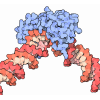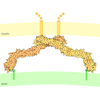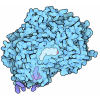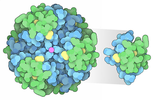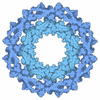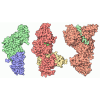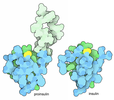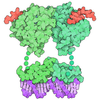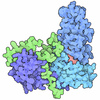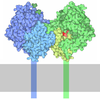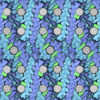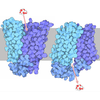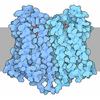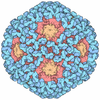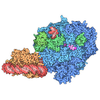Entry Database : PDB / ID : 9jv3Title Structure of Human HDAC2 Histone deacetylase 2 Keywords / Function / homology Function Domain/homology Component
/ / / / / / / / / / / / / / / / / / / / / / / / / / / / / / / / / / / / / / / / / / / / / / / / / / / / / / / / / / / / / / / / / / / / / / / / / / / / / / / / / / / / / / / / / / / / / / / / / / / / / / / / / / / / / / / / / Biological species Homo sapiens (human)Method / / Resolution : 2.57 Å Authors Tojo, T. / Itoh, Y. / Kurohara, T. / Li, Y. / Singh, R. / Narozny, R. / Wiel, A. / Miyake, Y. / Yamashita, Y. / Kusakabe, K. ...Tojo, T. / Itoh, Y. / Kurohara, T. / Li, Y. / Singh, R. / Narozny, R. / Wiel, A. / Miyake, Y. / Yamashita, Y. / Kusakabe, K. / Uchida, S. / Suzuki, T. Funding support 1items Organization Grant number Country Not funded
Journal : To Be Published Title : Discovery of an HDAC2-selective inhibitor based on enzyme-inhibitor binding thermodynamics and kinetics, and its potential as a therapeutic drug for neurological disordersAuthors : Tojo, T. / Itoh, Y. / Kurohara, T. / Li, Y. / Singh, R. / Narozny, R. / Wiel, A. / Miyake, Y. / Yamashita, Y. / Kusakabe, K. / Uchida, S. / Suzuki, T. History Deposition Oct 8, 2024 Deposition site / Processing site Revision 1.0 Oct 8, 2025 Provider / Type
 Open data
Open data Basic information
Basic information Components
Components Keywords
Keywords Function and homology information
Function and homology information Homo sapiens (human)
Homo sapiens (human) X-RAY DIFFRACTION /
X-RAY DIFFRACTION /  MOLECULAR REPLACEMENT / Resolution: 2.57 Å
MOLECULAR REPLACEMENT / Resolution: 2.57 Å  Authors
Authors Citation
Citation Journal: To Be Published
Journal: To Be Published Structure visualization
Structure visualization Molmil
Molmil Jmol/JSmol
Jmol/JSmol Downloads & links
Downloads & links Download
Download 9jv3.cif.gz
9jv3.cif.gz PDBx/mmCIF format
PDBx/mmCIF format pdb9jv3.ent.gz
pdb9jv3.ent.gz PDB format
PDB format 9jv3.json.gz
9jv3.json.gz PDBx/mmJSON format
PDBx/mmJSON format Other downloads
Other downloads https://data.pdbj.org/pub/pdb/validation_reports/jv/9jv3
https://data.pdbj.org/pub/pdb/validation_reports/jv/9jv3 ftp://data.pdbj.org/pub/pdb/validation_reports/jv/9jv3
ftp://data.pdbj.org/pub/pdb/validation_reports/jv/9jv3

 F&H Search
F&H Search Links
Links Assembly
Assembly



 Components
Components Homo sapiens (human) / Gene: HDAC2 / Production host:
Homo sapiens (human) / Gene: HDAC2 / Production host: 


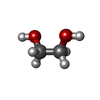
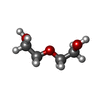
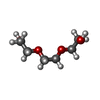
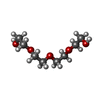
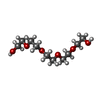
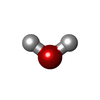







 X-RAY DIFFRACTION / Number of used crystals: 1
X-RAY DIFFRACTION / Number of used crystals: 1  Sample preparation
Sample preparation ROTATING ANODE / Type: RIGAKU FR-E+ SUPERBRIGHT / Wavelength: 1.54179 Å
ROTATING ANODE / Type: RIGAKU FR-E+ SUPERBRIGHT / Wavelength: 1.54179 Å Processing
Processing MOLECULAR REPLACEMENT
MOLECULAR REPLACEMENT Movie
Movie Controller
Controller



 PDBj
PDBj
